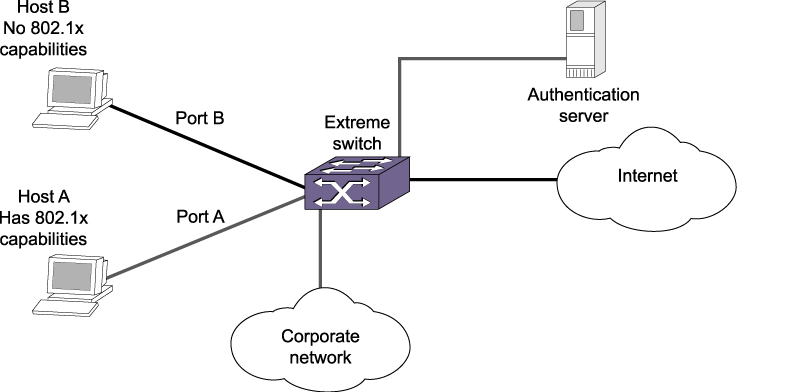Suppose you have a meeting that includes company employees and visitors from outside the company.
In this scenario, your employees have 802.1X enabled supplicants but your visitors do not. By configuring a guest VLAN (Virtual LAN), when your employees log into the network, they are granted network access (based on their user credentials and 802.1X enabled supplicants). However, when the visitors attempt to log into the network, they are granted limited network access because they do not have 802.1X enabled supplicant. The visitors might be able to reach the Internet, but they are unable to access the corporate network.
For example, in Guest VLAN for Network Login Host A has 802.1x capability and Host B does not. When Host A is authenticated, it is given full access to the network. Host B does not have 802.1X capability and therefore does not respond to 802.1X requests from the switch. If port B is configured with the guest VLAN, port B is moved to the guest VLAN. Then Host B will be able to access the Internet but not the corporate network. After Host B is equipped with 802.1X capability, it can be authenticated and allowed to be part of the corporate network.


 Print
this page
Print
this page Email this topic
Email this topic Feedback
Feedback